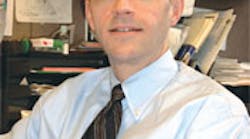As I write, it’s been 18 months since the financial collapse of 2008, and at least 25 months since the effects of recession became obvious in the domestic market. There are credible methods for measuring an even longer decline in domestic manufacturing, such as manufacturing employment levels or manufacturing’s share in the overall economy. Foundries and diecasters, to be specific, are keenly aware of the contraction in their market segment, in the numbers of operations, producers or suppliers, and especially employees.
Today’s metalcasting industry is not the industrial complex that lingers in so many memories. As in so many things, the past overshadows the present. And, thanks to the long-running trends that have brought us to this point, it’s difficult to imagine a better future.
This is a problem with so many efforts to “engineer” an economic recovery: it’s impossible to restore everything that has been lost, and by aiming to do so we may miss better opportunities. About 25% of the 8.4 million jobs lost in the U.S. since December 2007 will never return, according to economists cited in a Wall Street Journal forecast. Ultimately, other types of work, in other industries, must replace these jobs, in order to restore the economic contribution those jobs represented.
This illustrates one reason that it’s so critical to have a credible “vision” for the future – one that is ambitious without being unreasonable: We must acknowledge economic reality, maximize economic advantages and prepare to meet economic challenges. Currently, our financial leaders have a vision that starts with economic stability, but our political leaders’ have one grounded in economic sentimentality.
The political vision is to restore jobs, presumably every job that’s been lost. It started with last year’s $787-billion stimulus program, which has fulfilled promises of economic activity only modestly, and even less so for creating jobs. Next came a hard sell for “green” jobs — i.e., the preference for clean-energy and resource-recovery industries that is mostly rhetorical, and for now, unrealistic.
Lately, the political focus has turned to expanding U.S. industrial exports. The National Export Initiative will increase funds to promote exports and coordinate export volumes through government agencies. Second, the NEI will strengthen federal advocacy for U.S. products with foreign businesses, farmers, and officials. And, it will create an Export Promotion Cabinet (from among Agriculture, Commerce, State, and Treasury department officials, as well as the Export-Import Bank, the U.S. Trade Representative, and the Small Business Administration) reporting to the President.
The thinking is that foreign markets will recover from recession sooner than the U.S., so exports to those countries will support domestic jobs. “It’s all about jobs,” said USTR Ron Kirk, “and if done right, … a smart, aggressive, progressive trade policy of the United States can be a critical part of our overall economic recovery program.”
That’s not all: there is a “jobs bill” full of payroll tax credits and other incentives to employers, hoping to reduce chronic unemployment.
Whether these strategies converge into higher employment levels, and then to economic recovery, will be hard to track. By contrast, we can begin to tally positive results for the vision that favors financial stability.
The rumored merger of the Citation Corp. and Grede Foundries Inc. has been sealed. This is growth via consolidation. It projects a new vision of metalcasting, in line with a credible understanding of domestic manufacturing.
The new Grede Holdings LLC has 14 foundries with 2,700 workers. It will cast up to 600,000 tons/year of ferrous products for automotive, industrial and heavy truck markets. Chairman Doug Grimm said the group expects $600 million in revenue this year, and will operate with low debt and readily available credit. “This gives us a best-in-class financial profile, (and) allows us to invest appropriately and weather economic cyclicality moving forward,” Grimm stated.
The foundry giants of the past are gone, but we have of vision, and now an example, of what smart investment and thoughtful planning can accomplish. It was impossible to imagine such a development 12 months ago. Let’s hope there are more of these reasonable visions in development of the months to come.
Robert Brooks, Editor










